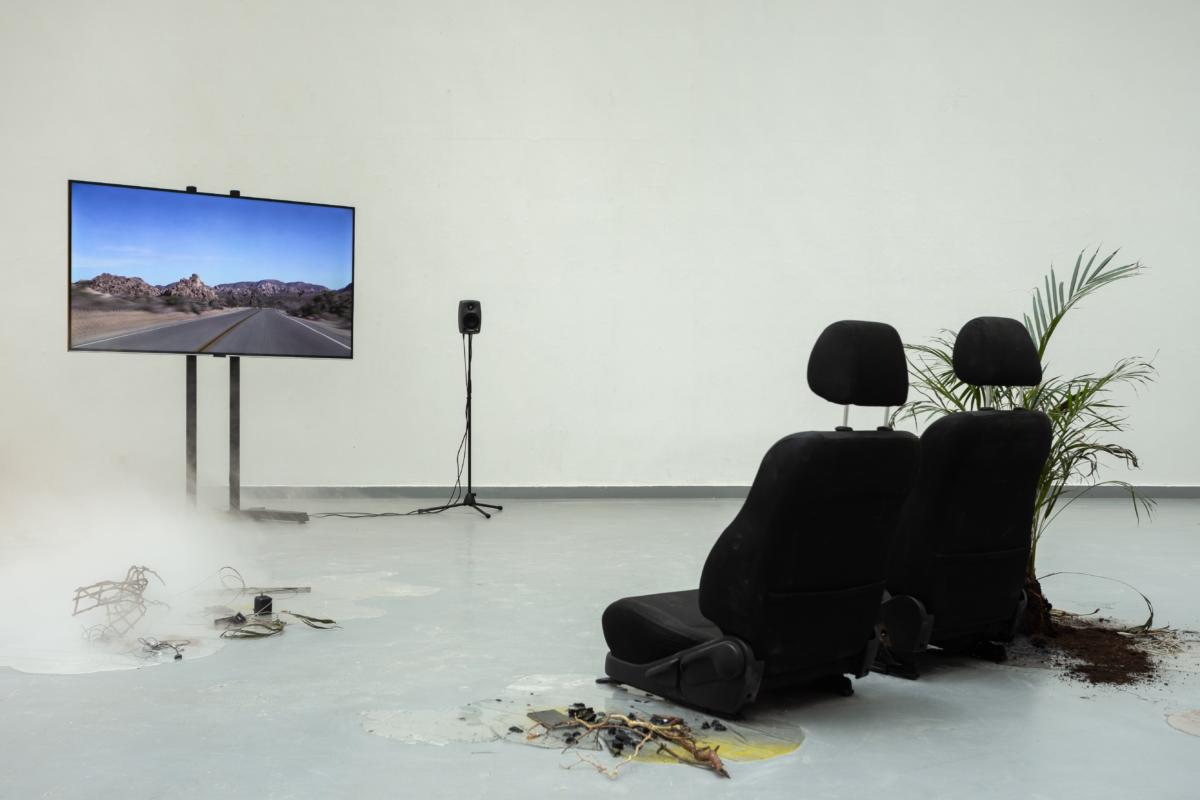
The Baltic Triennial has just opened its thirteenth edition in Vilnius. Curator Vincent Honoré presents an ambitious proposal, uniting all three Baltic states for the first time on the centennial of independence and opening with an exhibition occupying the entire Contemporary Art Centre – the Triennial’s historic seat. The exhibition will continue in Vilnius until the 8th of August with the Tallinn and Riga openings on the 29th of June and 21st of September respectively. The goal of the triennial is a salient presentation of exploded identities and a call for a chorus of multiplicity. Without stating any claims, the exhibition is a platform for a polyphony of voices. These voices come from different worlds and have various propositions, but the exhibition is defined by a joyous march into the solar anus of nuclear apocalypse – in parodic deceptive form – with the typhlotic cackle of bourgeois entertainment. So what is the ghost we are asked to give up? Are we even asked to give it up or is it ironic? Is it the ghost of the Soviet past that entwines its way all the way back to Karl Marx’s spectre which haunts Europe? Or is it rather the ghost of history which actually serves to define and propel identity, whether it be in terms of folklore, popular struggle, or the history of extreme oppression.
With the ceiling and walls of the CAC demolished into an apocalyptic architecture reflective of the theme, and offal scattered with alienated organs – toxic chemical spills offer a mood of light-hearted leaping into an accelerated catastrophic world. Almost like a naïve child’s play skipping into Tarkovsky’s “The Zone” visualised in Dora Budor’s toxic sun installation– we are having fun while spiralling into disaster. With an extensive curatorial bureau and 69 artists the multiplicity erupts into a non-linear chaos. As reflected in the curatorial statement, there is no intended aim but rather a presentation of versatile subjects.
The political stakes of the triennial focus on the restraints of the body, nationality and identity, all the while ignoring the art structure as well as the aggressive forces of market-capitalism that encapsulate it within our daily lives. The Triennial was established in 1979 as an initiative to showcase young, non-conforming Baltic artists during the Soviet era, a space initially conceived for dissidence and experimentation. The political stakes of Honoré’s vision draw on this spirit of dissidence in some ways, but in others become complicit in the new overarching art structure that the original Triennial would have fought against. Honoré’s successful critique relates to Lithuania’s plague of anti-LGBTQ sentiment, including recent political disturbances around the organisation of Pride events. The controversial use of “they” to describe all the artists in the catalogue was an important gesture that functioned to disturb conservative sections of the art world. While powerful, this gesture revealed the imported (colonial) language from European art epicentres (London), transposed to the Baltic region.



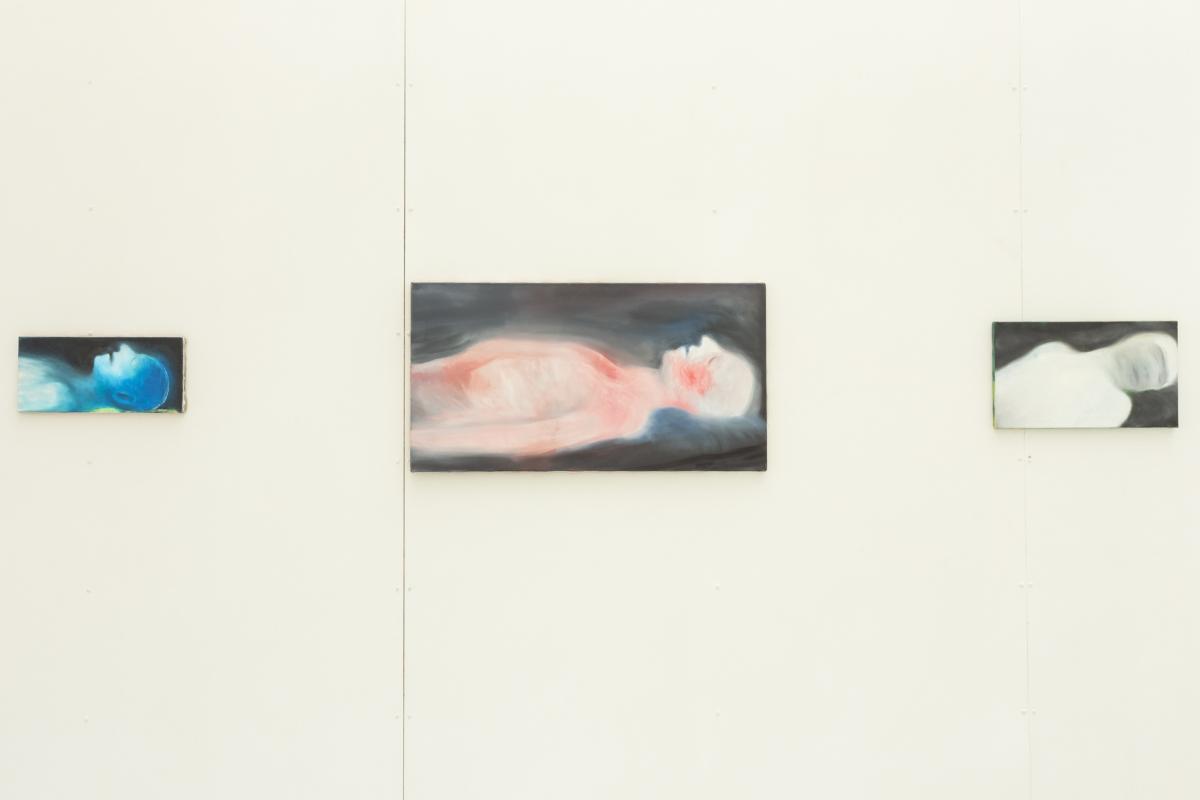
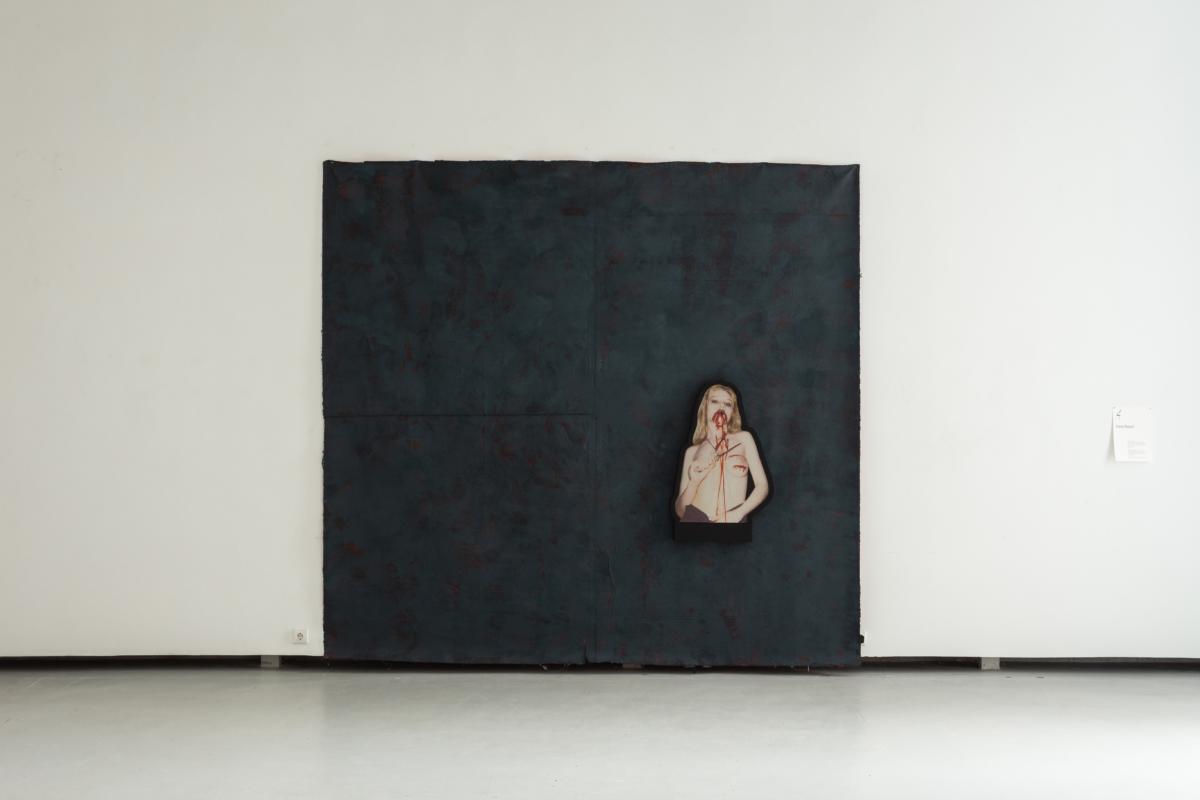
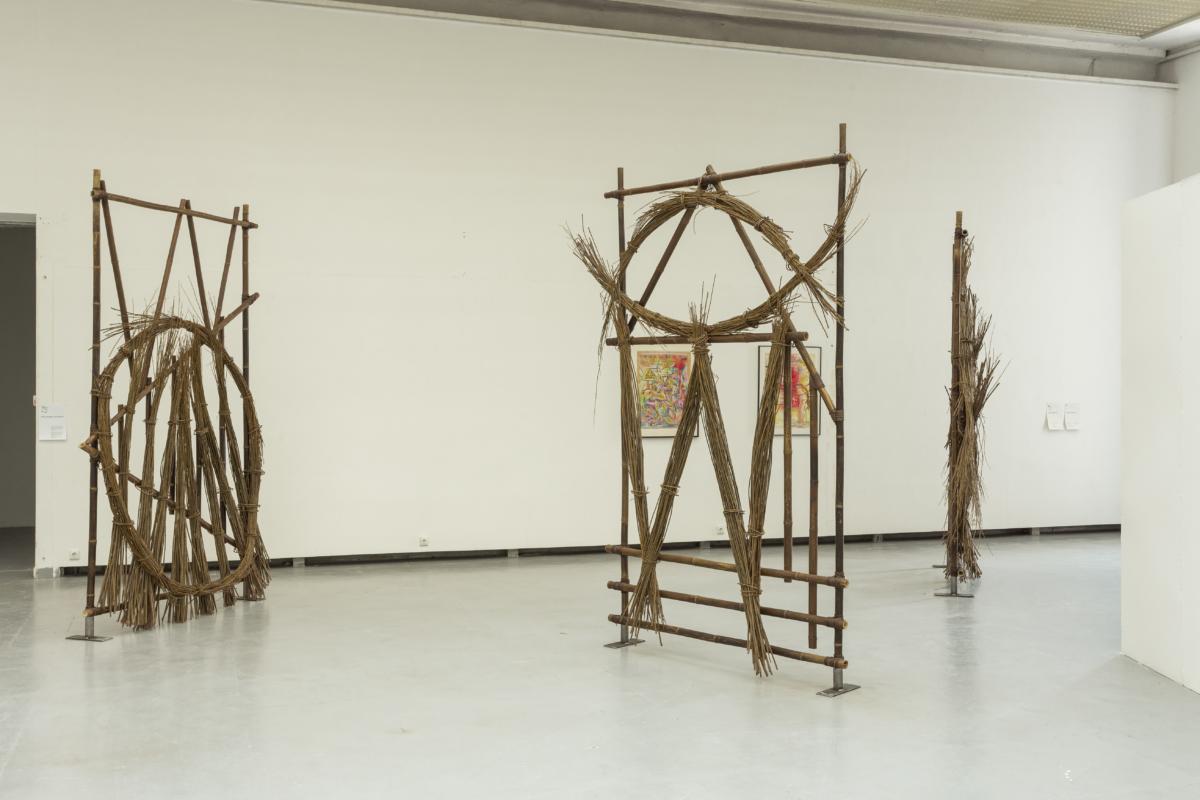
Although not delving as deeply into the local context as previous editions, fresh eyes provided a few valuable insights such as a first-time collaboration with a Russian born and based artist, Evgeny Antufiev, the first institutional exhibition of the young Lithuanian artist Ieva Rojute, and the inclusion of the legacy of Estonian artist Anu Põder.
While the freedom and nauseating joyfulness of the exhibition are seductive, it also lamentably points to our inability to fight against new oppressive forces of accelerated market neo-colonial capitalism. The final assertion is that we can be whoever we want, as long as we behave and enter the global art market as instructed.
Entering the exhibition hall from either side installations from young Baltic artists prelude the back space of the main exhibition hall at CAC. Immediately evidenced is the architectural plan of Diogo Passarinho whose recycled and garbled walls work as a recycling strategy that tragically recalls an aesthetics of gentrification in which “rustic” or “DIY” aesthetics are artificially inseminated into the white cube. An impressive structure constructed of material from the old Ignalina nuclear plant by Augustas Serapinas, dominates the first room. Located on the border between Latvia and Belarus, the plant was a typical Soviet structure surrounded by housing units for workers. Children from the region were invited to build the structure which becomes a monument to these “nuclear communities” and the socio-environmental echo they have on today’s society. The introduction of this Soviet “ghost,” however, ends there as the route begins to be filled with the vacuous, commercial gargle of artists like Darja Bagajic, a scene of disturbing American pop stars with ambiguous ethical claims; dragon eggs from American Max-Hooper Schneider; and bamboo works from French artist Caroline Achaintre adorned with references to “Primitivism.”
One international addition that inserted an emotional and powerful dialogue are the haunting sculptural assemblages of Melvin Edwards. His sculpted creatures made of found and disused objects form humanoid, abstract shapes, resembling farmhouse torture machines that recall the ongoing struggle of African Americans in the US. His works clamp down on the exhibition with the force of history, revealing ghosts that are still tragically alive, phantoms that serve to create identity as much as to incite resistance. The body, in this case, becomes the object of exploitation, which reveal themselves in Edwards’s works contorted into barely recognisable shapes.
Just around the corner are the soapy tongues of Anu Põder, an Estonian artist who passed away in 2013 leaving behind a body of work that has not been given enough international recognition. Her inclusion in the Triennial next to artists born in the 90s shows the continuing relevance of her work. Behind the maze of walls made of extracted ceiling material, works from international superstars like Nina Beier, Katja Novitskova, and new and upcoming Latvian artist Daiga Grantina, are given due. Although the works are powerful in themselves, their scale next to the uprooted innards of the architecture makes them lost in space. At times the complexity of the architecture dwarfs the works and confuses the Triennial’s content with its architecture.

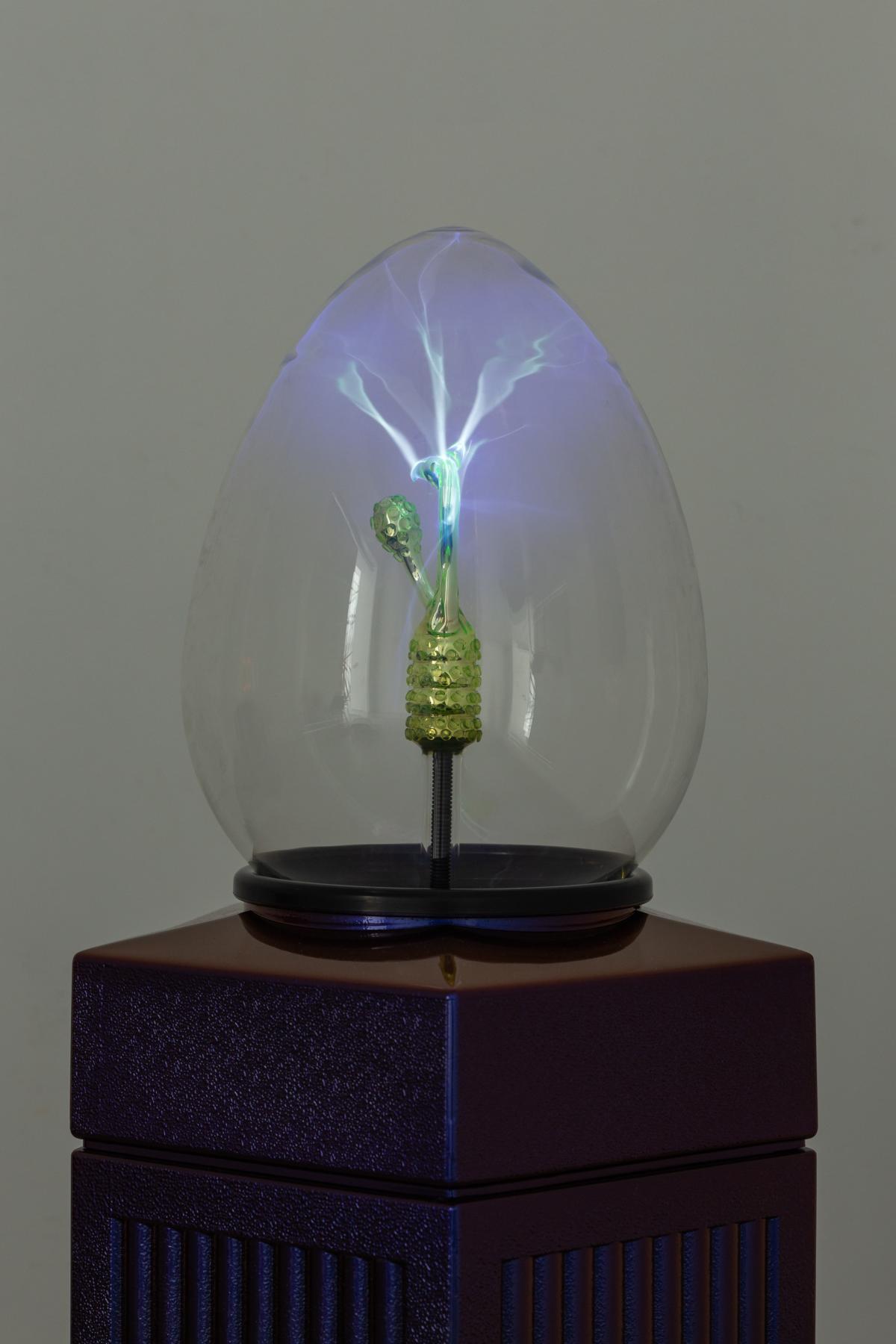
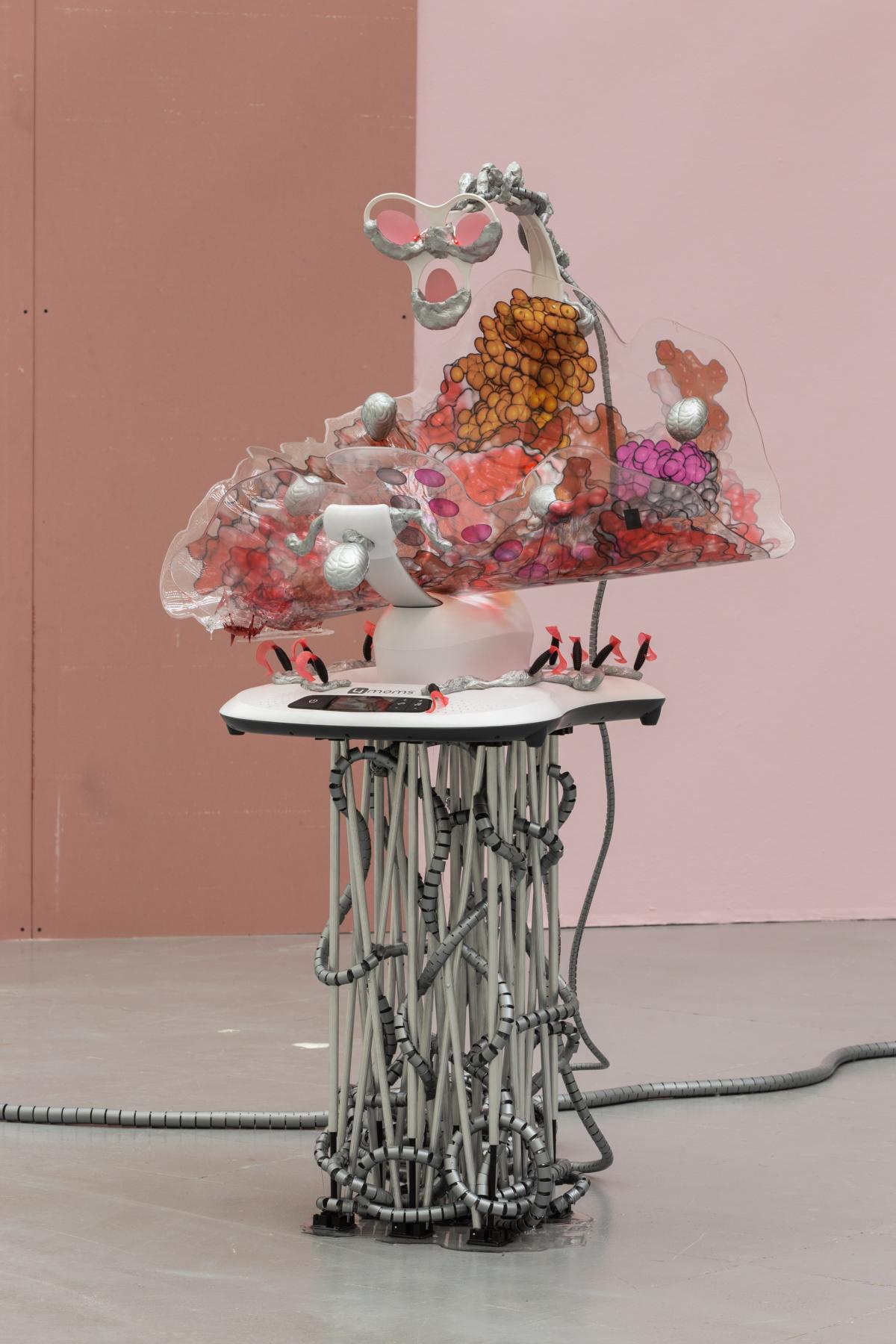

In a first-time collaboration with Russian born and based Evgeny Antufiev, a house of imagined archeology is constructed in his typical DIY-style constructions of card paper and sympathetic-looking ceramic heads. The archeological and mythological temples that Antufiev erects are ghostly objects in themselves, objects that hold history, and human invention with poor materials as their base. In the corner, an installation by Czech artist Anna Hulacova creates dialogue with Antufiev’s temple. Her sculptural relics mix ancient mythology with the legacy of Soviet-era sculpture tied to bodily decomposition, bubbles literally gurgling out of the stomach of a Bacchus-like figure reclined on an upturned swimming pool.
The final room brings together young Lithuanian artists Pakui Hardware and Ieva Rojute, in one of the most convincing rooms of the Triennial. The space appears guttural, with organs suspended around the room covered in sickly sweet colourful glazes. Chia seeds and saliva-coated copper pipes distract from the uncanny discomfort of the dissected human organs and their mechanic display. The walls are soaked in agonizingly honest handmade calligraphic phrases of Ieva Rojute. Always based on family relations or striking emotional phrases, the walls add a dramatic element that resounds in this colon of the exhibition.
In an isolated room, A Way to Leak, Lick, Leek, 2016) by Laure Prouvost ties everything together in the same feel-good demonic sense of the entire trajectory. In a film installation surrounded by resin-coated smashed iphones, eggshells, and a pineapple, a group of young people plan a disturbing journey into the desert where they want to revel in capitalistic consumption with such rituals as sniffing burning plastic, biting into living songbird’s flesh, and cooking on the hood of an automobile. Korakrit Arunanondchai’s new version of With history in a room filled of people with funny names 4 loops side-lined in a basement next to the bathrooms – and the surreal ghostly narrative of Pierre Huyghe’s The Host and the loud (2009-2010), offer longer moments of contemplation and poetic narrative.


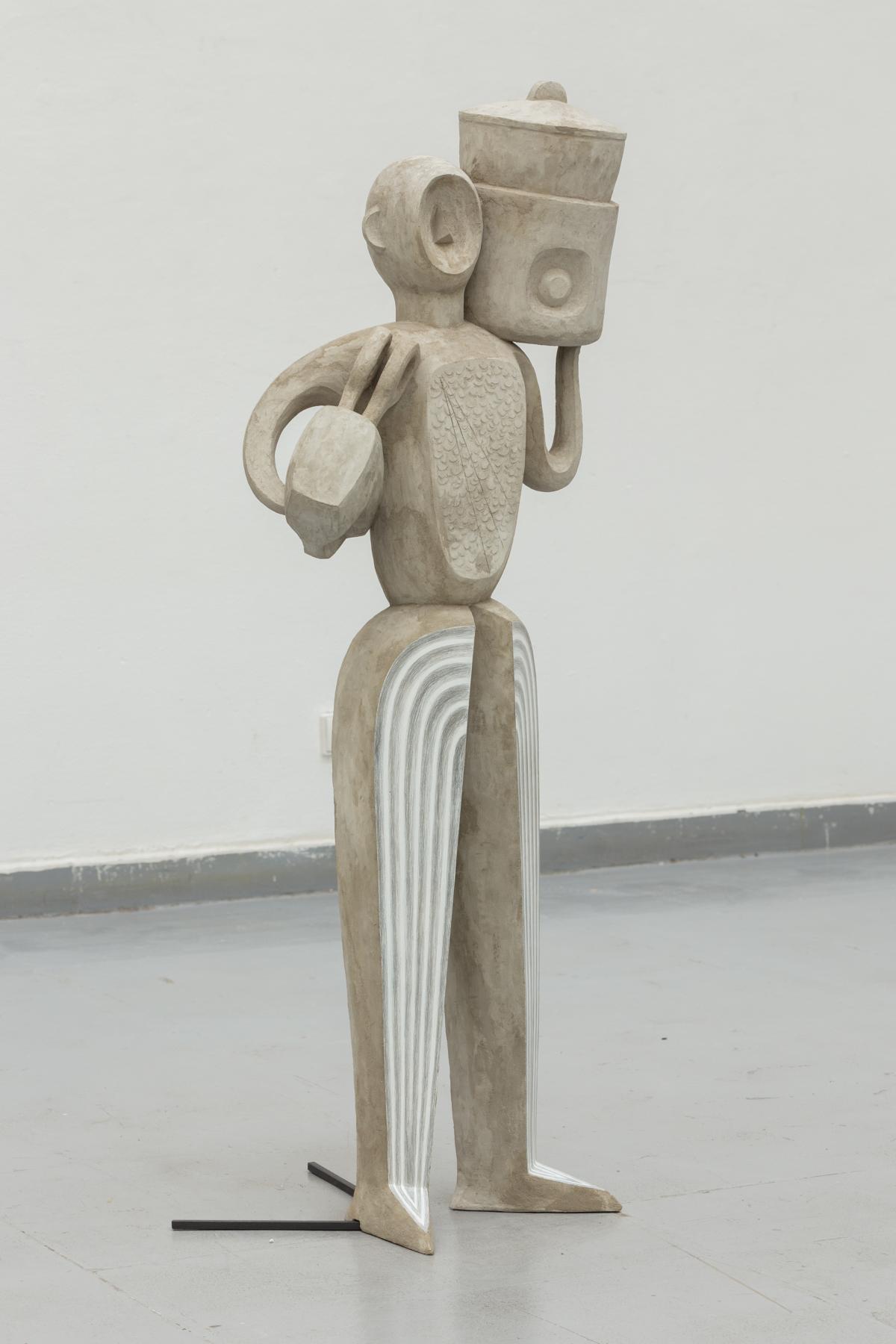

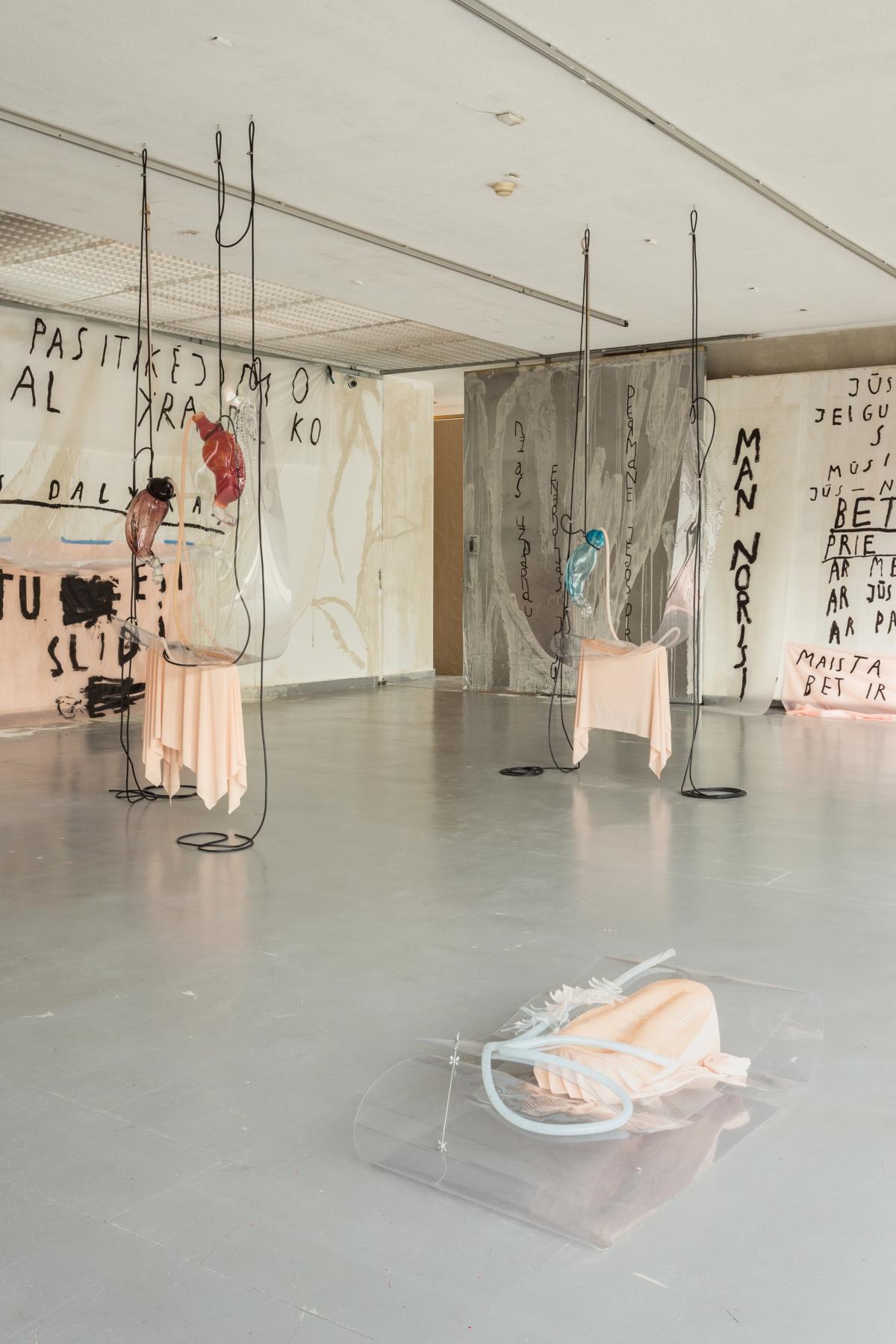
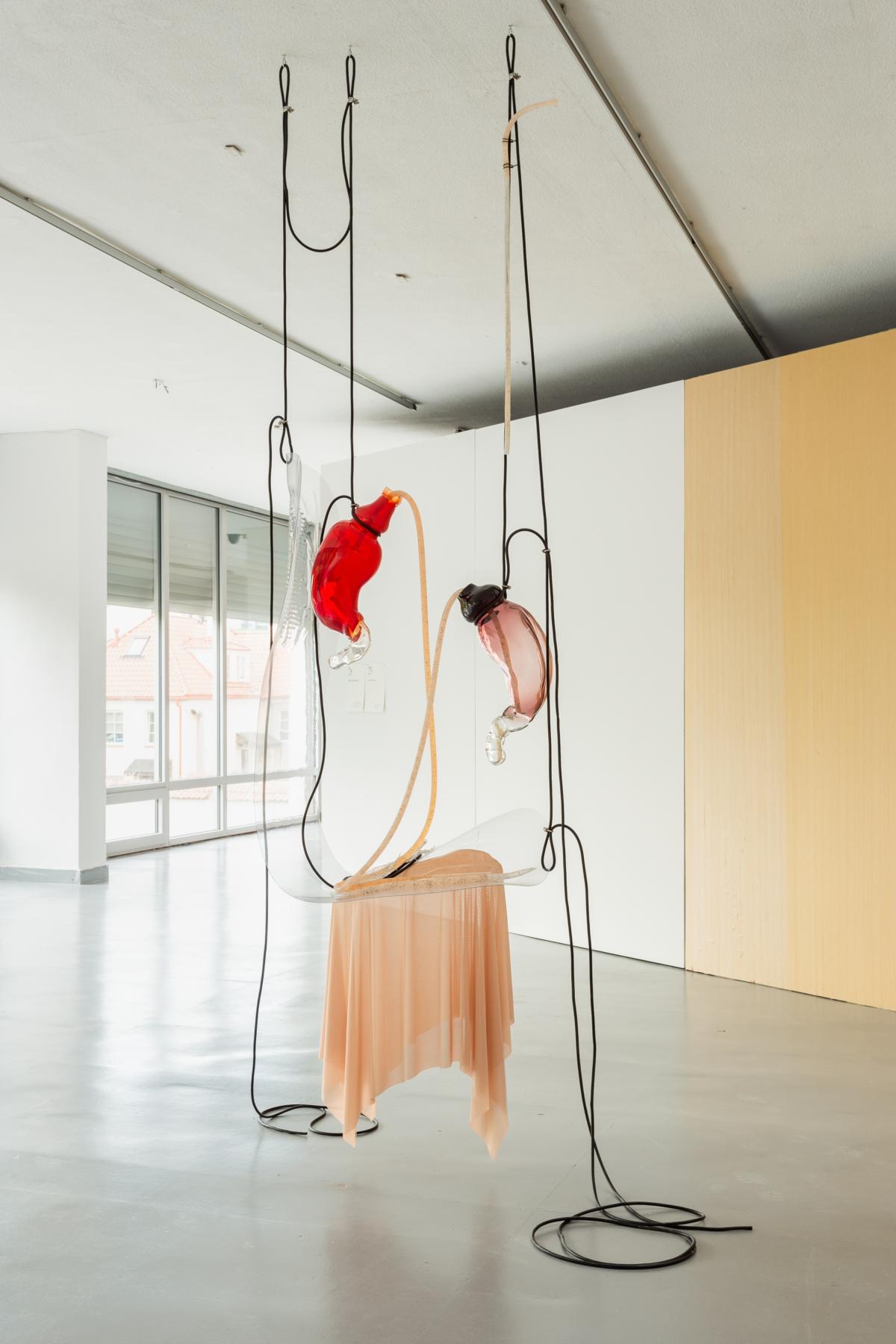
While the freedom and nauseating joyfulness of the exhibition are seductive, it also lamentably points to our inability to fight against new oppressive forces of accelerated market neo-colonial capitalism. The final assertion is that we can be whoever we want, as long as we behave and enter the global art market as instructed. The eagerness to work with galleries and the Art Basel Unlimited labels each accompanied with a large thank you to the artist’s gallery (only missing a phone number for the convenience of collectors who might wish to buy the works straight away), provides no criticism to a state system that provides little support to the arts. In this dramatic year for the Baltic art scene, which will inflict the first private biennial in Riga, this could have been an opportunity to reject pandering to economic power. Honoré’s ties to the private collection of David Roberts in London contains a strong tie to Lithuania through the collector’s wife Indre Serpytyte – and artists from the collection certainly feature in this public Triennial.
The exhibition is a seductive spectacle for bourgeois entertainment. The childish jolliness trudging along into the apocalypse is a perfect mirror of our oil-based plastic-loving society on the brink of ecological disaster and no future to build.
But Honoré is true to his vision – a strong aesthetic line runs throughout and although coming from France and London, his familiarity of the Baltic scene from his previous experiences is visible. According to Canan Batur, a member of the Triennial’s curatorial bureau, “we all come from different backgrounds, and that serves to balance each other out. All the curators had their own responsibilities, and our multiplicity powered us further.” Batur herself comes from Turkey, offering a parallel perspective on restrictive freedoms of expression and ideological state control.
The opening performances offered a glimpse of respite from the overbearing market complicity. Powerful pacts by Liv Wynter and Adam Christensen invigorated the entranceway to a packed, eager audience. The punk and anti-system elements of the pride in subcultures arose from the eloquent DIY dress and throaty song of Christensen, and Wynter’s forceful lyric verses. The performances exploded into the space hijacking the narrative of objects. On the following day, an impressive, zany performance by local artist, Žygimantas Kudirka, started out with a jab at the Triennial itself,with the piece “Welcome to Lithuania”, which used marketing slogans and absurdist magical claims playing on stereotypes of the country.
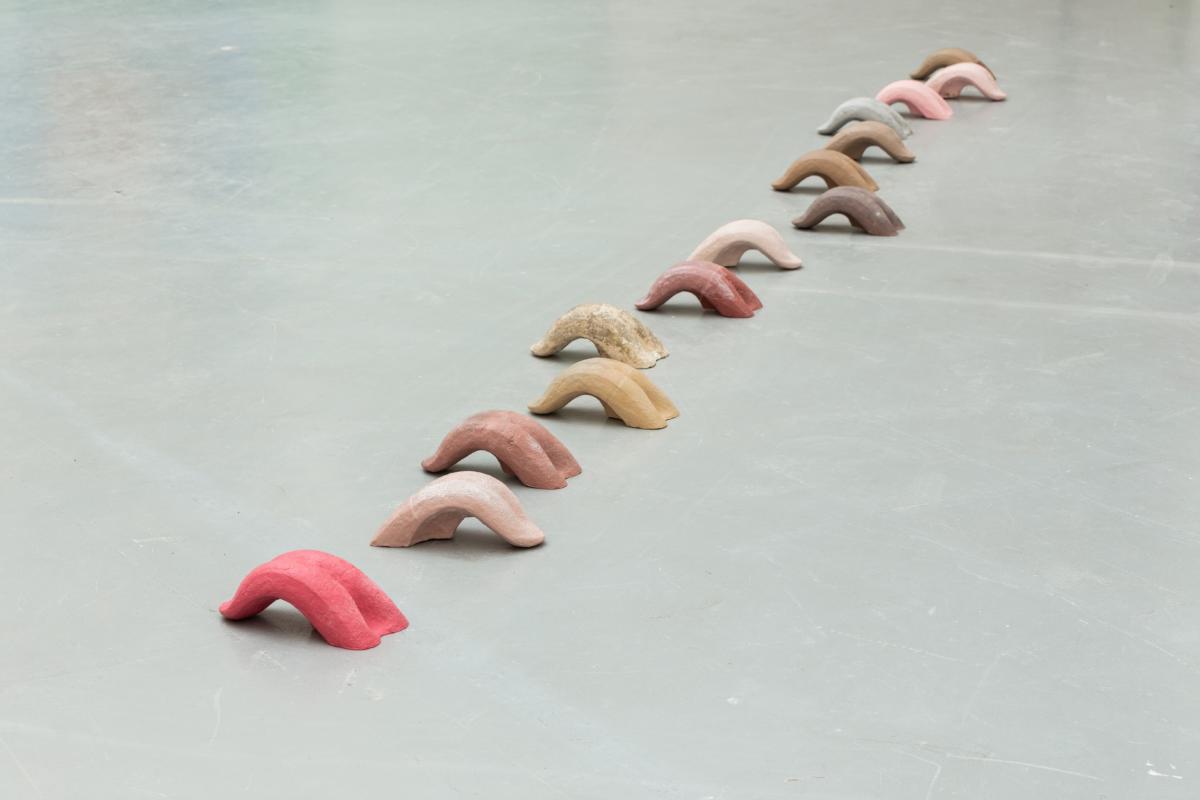

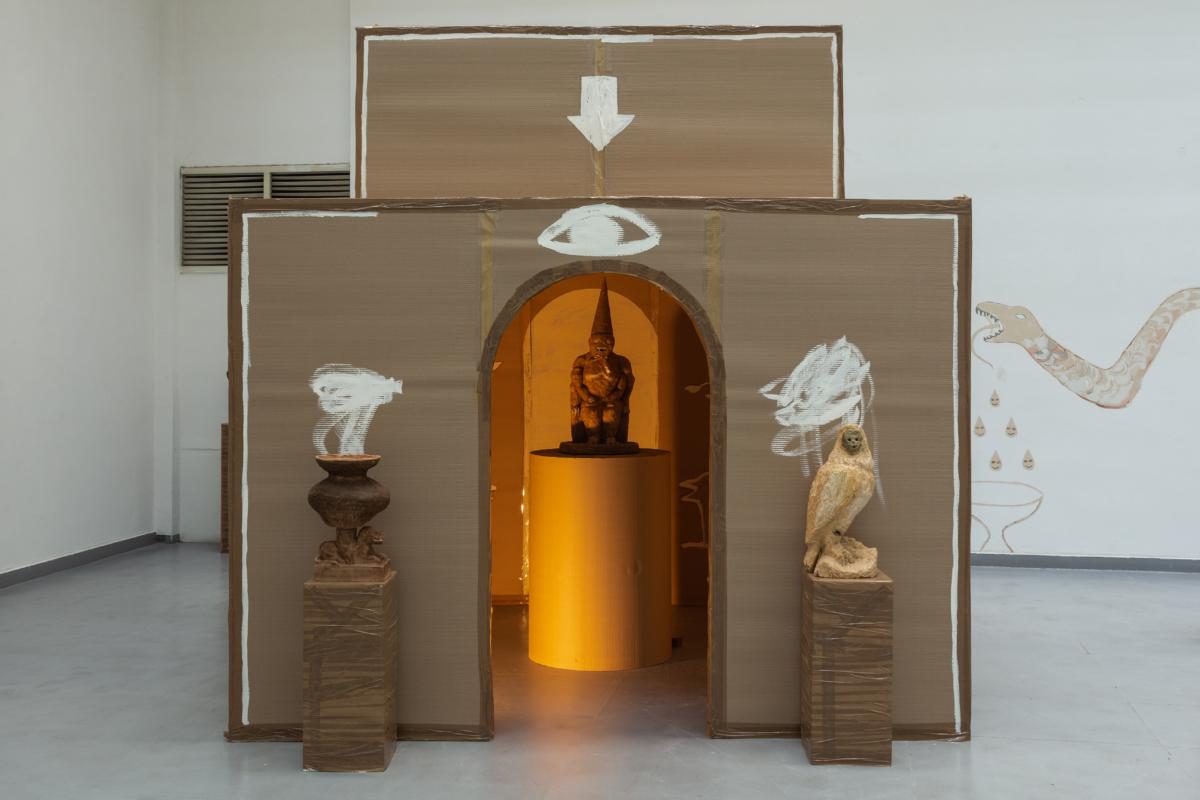
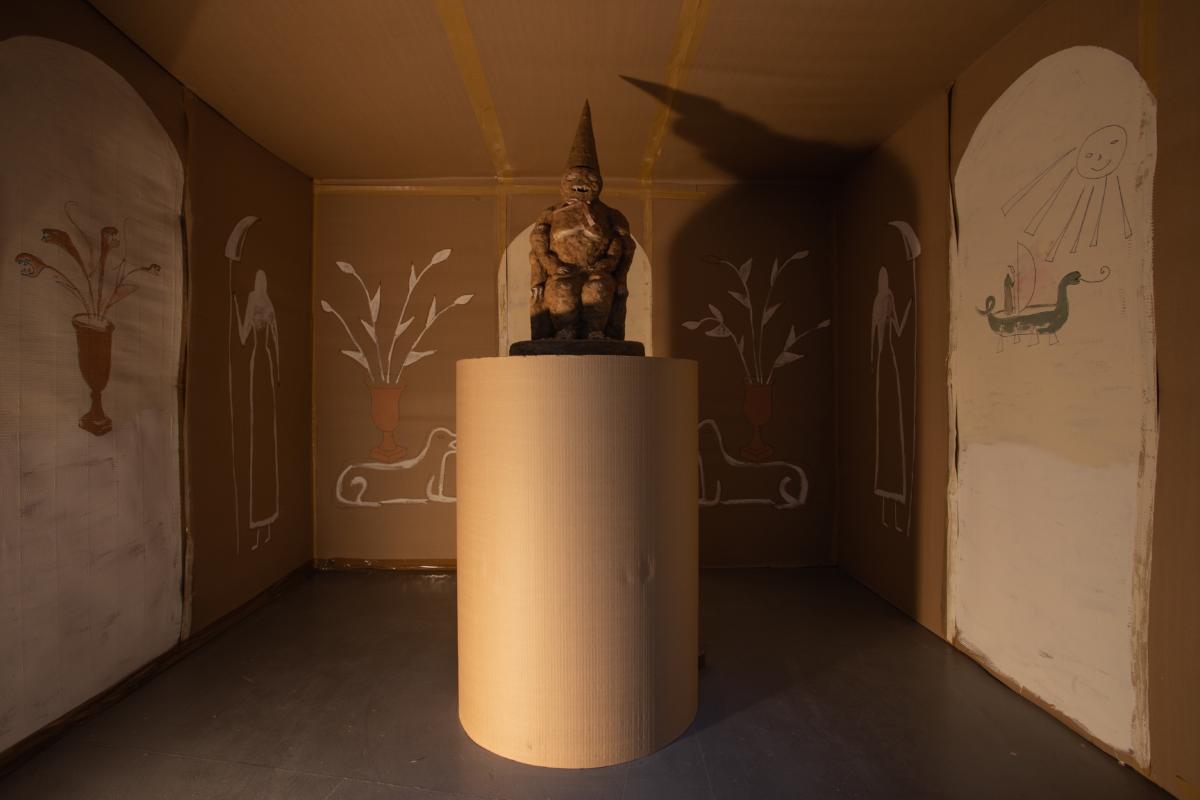

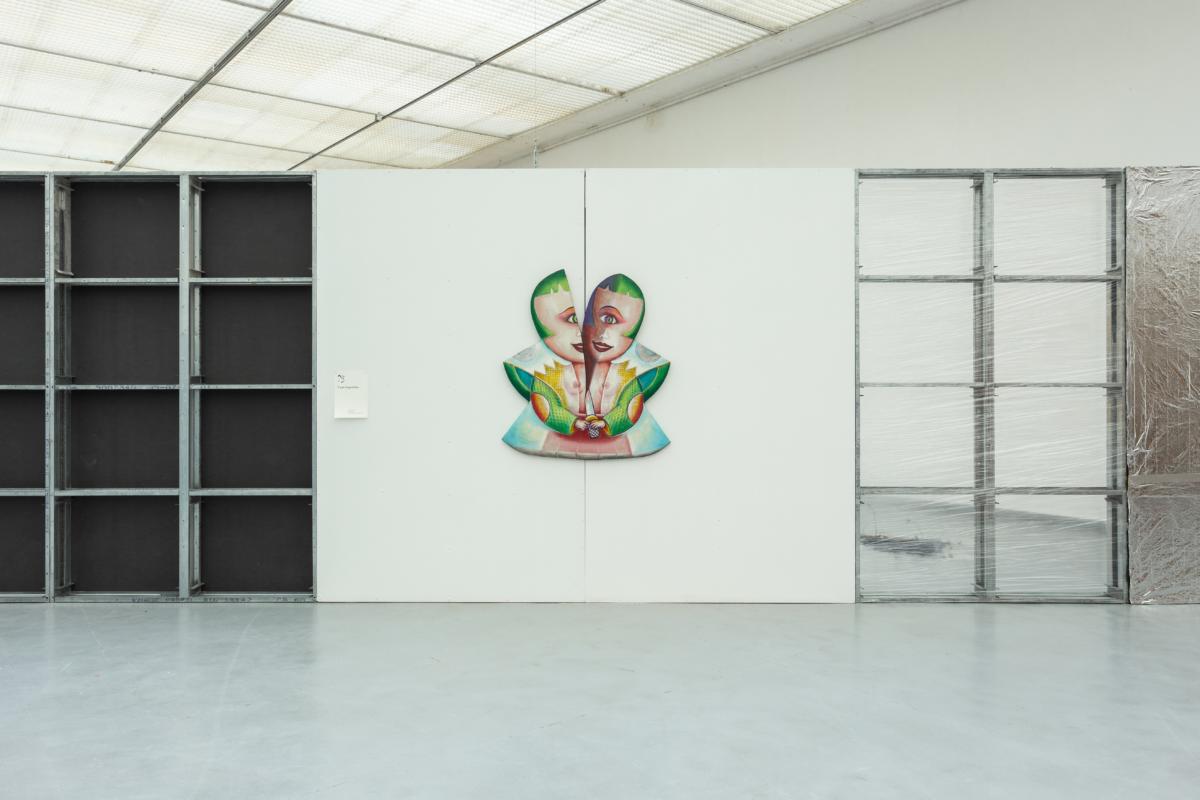
In that case, the words of Lithuanian Minister of Culture Liana Ruokytė-Jonsson given during the opening speech take on an important resonance: “I beg you, confront your ghosts before giving them up.” And in this sense, the Triennial works exactly as it planned. Without making any solid claims the title can take on the opposite meaning. We are in a post-truth society so make what you want of it, the space is only a platform without solid ways forward – only a stage for the performance of identity clipped in to the chain of market relations that become the only real tether from one being to another. The exhibition is a seductive spectacle for bourgeois entertainment. The childish jolliness trudging along into the apocalypse is a perfect mirror of our oil-based plastic-loving society on the brink of ecological disaster and no future to build. The Triennial is poetic, it is beautiful, and it is dissident at the same time as being tragic, dystopian, and conformist; it holds up the mirror in the face of our society and its inability to change in such frightening times. The cadaver explodes leaving tongues on the ground and pieces of hair in toy cars. So buckle your seatbelt, and enjoy the ride – while you can.
Imprint
| Index | Àngels Miralda |
